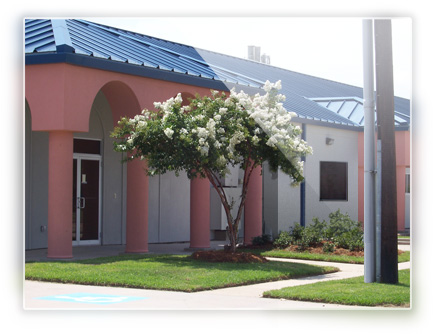Operating a RRC
RRC service contracts are awarded through a competitive procurement process following the
requirements set forth in the Federal Acquisition Regulations (FAR). BOP community
corrections field offices identify a need for RRC services in a specific area. The
number of beds needed is determined by the number of inmates projected to release to
the area, prosecution trends, new initiatives, and contact with other federal law
enforcement agencies. All RRC procurements for the BOP are conducted in the Central
Office, Washington, D.C., and once awarded, the contracts are administered by the
community corrections field offices.
Interested providers are provided a Statement of Work (SOW), or in some cases a
Performance Work Statement (PWS), which outlines performance requirements
for operating an RRC. The SOW provides detailed
information about the administrative and program requirements and
all other services the contractor will be required to perform. A PWS is a document
outlining general performance requirements in a performance-based contract. The
contractor will then demonstrate how they plan to meet those requirements in its
contract proposal.
The competitive process is open to all interested
providers, and the BOP encourages full and open competition during the procurement
process. The BOP advertises for RRC services on the FedBizOpps website. For procedures,
visit the section, Doing Business with the BOP.
Providing services for ex-offenders
Services are awarded through a competitive procurement process following the requirements
set forth in the Federal Acquisition Regulations (FAR). The BOP does not offer
community-based services for ex-offenders through grants.
Custody of inmates at an RRC
Pre-release inmates at an RRC remain in Federal custody while serving a sentence imposed by
a U.S. District Court or DC Superior Court. Offenders under the supervision of U.S.
Probation or the Court Services and Offender Supervision Agency (CSOSA) are housed as
a condition of their supervision.
Inmate placement into a RRC
Approximately 17-19 months prior to an inmate's release, an RRC referral recommendation
is made by the unit team (which, at a minimum, consists of the inmate's unit manager,
case manager, and counselor) at a scheduled program review meeting. In making the determination
on suitability and length of placement (which could be up to 12 months), each inmate is considered
using the five factor criteria from 18 U.S.C. 3621(b):
- the resources of the facility being contemplated
- the nature and circumstances of the offense(s)
- the history and characteristics of the offender
- any statement by the court that imposed the sentence concerning the purposes for which the sentence to imprisonment was determined to be warranted or recommending any type of penal or correctional facility as appropriate
- any pertinent policy statement issued by the U.S. Sentencing Commission
If the Warden approves the unit team's recommendation, a referral packet is forwarded to an RRM Office -
ordinarily this is the nearest office to where the inmate will be releasing. Once
the RRM receives the packet, it is reviewed and forwarded to the appropriate RRC contractor. The RRC contractor
assesses the inmate's needs and makes the decision to accept the inmate for placement, or deny a placement.
Upon acceptance of placement, the RRM works with the RRC contractor to approve and/or modify the unit team's
proposed placement date. The inmate is then informed of the final decision by the unit team.
Questions regarding an individual inmate's RRC placement should be directed to the inmate's unit team at the institution where the person is confined.
Inmate transportation to an RRC
The BOP provides for the most economical means for a furlough transfer to an RRC. An inmate may be
allowed to choose the means of transportation to an RRC if all the transportation costs are borne by
the inmate. See: P5280.08, Furloughs
Inmate discipline & appeal procedures at an RRC
Inmates in community programming have the same responsibilities and rights as inmates in other BOP
facilities. Appeals of disciplinary actions may be completed through the administrative remedy
program.
See also:
Disclosure of inmate's designation
Before arriving at the RRC
For security reasons the BOP does not release information about an inmate's designation to a RRC, or their transfer status.
After arriving at the RRC
Using our website, you can find inmates who have arrived at a designated facility. However, we do not
reveal the actual address of the RRC - just the RRM office responsible for the inmate.
Other nomenclatures used
The terms "CCC", "Halfway House", or RRC are interchangeable and all refer to a contracted Residential Reentry Center (RRC).
Some policies or older documents may use previous terms, however the current term, RRC, was implemented several years ago to
more accurately convey the mission of the facility-facilitating reentry into the community.
